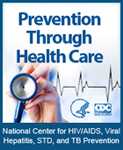National Latino AIDS Awareness Day (Oct. 15)
Media Statement
For immediate release: October 15, 2012
Contact: National Center for HIV/AIDS, Viral Hepatitis, STD, and TB Prevention
404-639-8895, NCHHSTPMediaTeam@cdc.gov
“Many Communities, One Goal – Reversing HIV among Latinos”
Statement by Kevin A. Fenton, MD
Director, National Center for HIV/AIDS, Viral Hepatitis, STD and TB Prevention Centers for Disease Control and Prevention
National Latino AIDS Awareness Day is a time to reflect on the many thousands of Latino lives affected and lost to HIV and AIDS, and to shape a future free of the disease.
Today in America, approximately 1 in 50 Latinos will be diagnosed with HIV in their lifetime. The rate of new HIV infections among Latino men is almost three times that of white men (39.9 vs. 15.9 per 100,000), and the rate among Latinas is more than four times that of white women (11.8 vs. 2.6 per 100,000). Gay and bisexual men are the most severely affected, accounting for the largest proportion of HIV infections among Latinos overall and in each region of the country. The scope and makeup of the epidemic, however, differ significantly by region and among Latinos of different ethnic origins.
New CDC data make clear that just as there is no single Latino community in the United States, there is no single solution to the epidemic – effective HIV prevention programs must be tailored to diverse needs. Differences in country of birth and ancestry are critical to understand, given that research indicates risk behaviors and influences on behavior differ for each culture.
For example, the data show that Latinos living in the Northeast have the highest HIV rates of all Latinos in the nation. In addition, HIV-positive Latinos in the Northeast are more likely to have been born in Puerto Rico and to have been infected through intravenous drug use, compared to other regions. By contrast, compared to the Northeast, Latinos diagnosed with HIV in the South are more likely to be of Mexican or Central American descent and to have been infected through male-to-male sexual contact.
In addition to the need for tailored prevention strategies, other CDC data demonstrate the critical need to increase access to HIV testing and care in Latino communities across the nation. Latinos living with HIV are less likely than whites to know their HIV status, to be linked to medical care and to have their virus under control with antiretroviral therapy. Latinos are also less likely to have access to health care and HIV prevention services, due in part to poverty, discrimination, language barriers or the stigma of HIV.
Understanding and addressing these challenges is critical to advancing CDC’s High-Impact Prevention approach and the National HIV/AIDS Strategy. The Strategy calls for developing and prioritizing the most effective testing, prevention, and treatment strategies for the hardest-hit populations, including Latinos.
To strengthen efforts to fight HIV disparities, CDC is working closely with federal and state agencies to address the social, economic and cultural barriers to HIV testing and care in communities of color, including Latinos. To help ensure HIV testing and prevention reach those most affected, CDC supports numerous community-based efforts for young, gay, bisexual and transgender Latinos, Latinas, injection drug users, heterosexual couples and other Latinos at risk of HIV infection. And to spark broader community action, CDC helps leading national Latino organizations incorporate HIV prevention into their day-to-day activities through its Act Against AIDS Leadership Initiative.
If we are to achieve the goal of an AIDS-free generation, we must work together to reverse the HIV epidemic among Latinos – the nation’s fastest growing ethnic population.
This will require the collective efforts of individuals, communities and governments to ensure everyone has accurate information about HIV, to fight stigma, and to increase access to effective prevention services, particularly HIV testing. We must also ensure that more Latinos diagnosed with HIV are able to receive the ongoing HIV treatment and care needed to stay healthy and reduce the risk of transmission to others.
On this National Latino AIDS Awareness Day, let us recognize and leverage the strength of diverse Latino communities and recommit to do all that we can to keep every community free from HIV.
For more information on HIV, please visit www.cdc.gov/hiv. To find HIV testing locations near you, please call 1-800-CDC-INFO or visit www.hivtest.org.
###
- Page last reviewed: October 11, 2012
- Page last updated: December 27, 2013
- Content source:


 ShareCompartir
ShareCompartir

